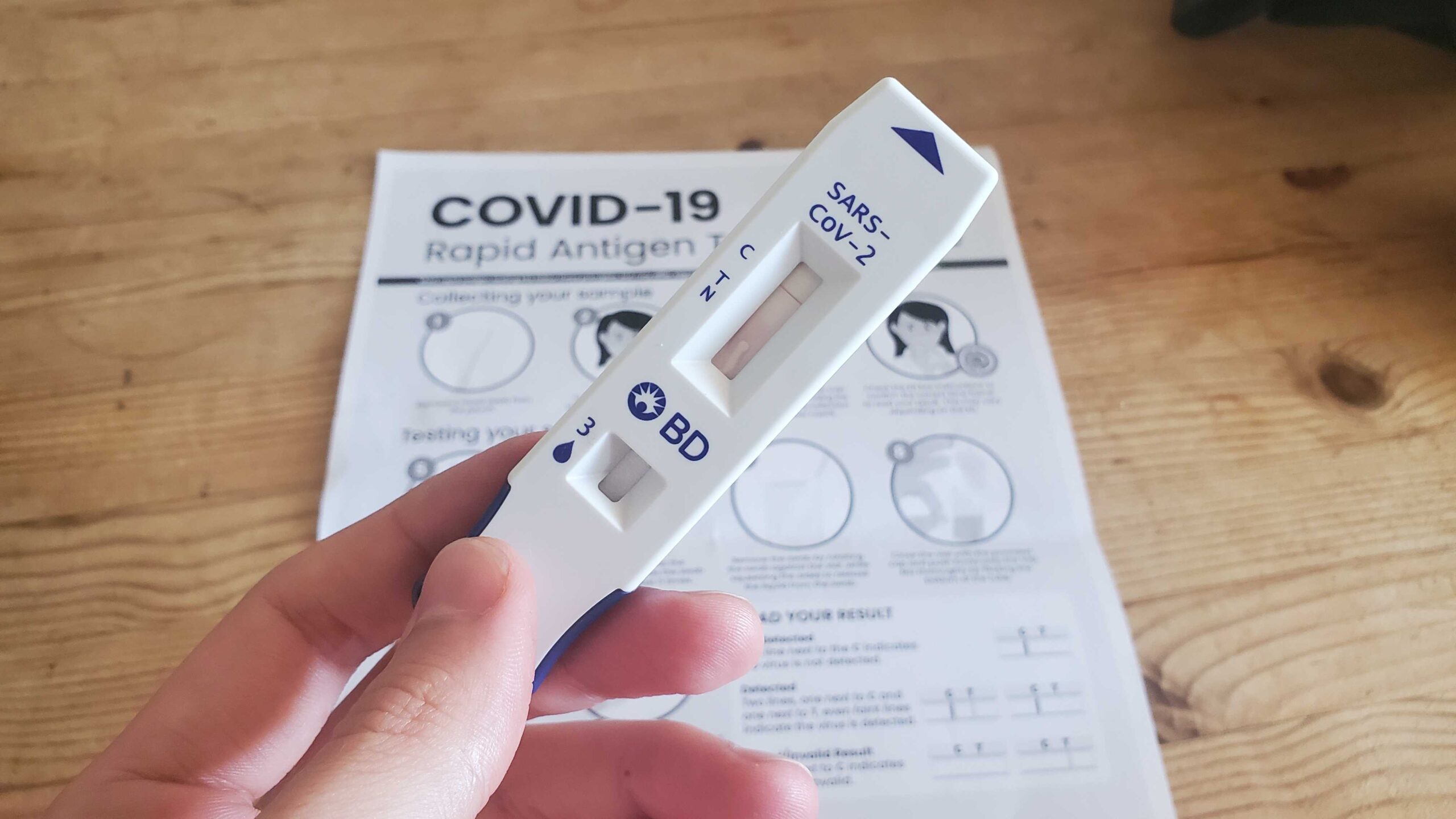Evidence shows some Covid-19 cases can remain infectious after seven days, meaning they may continue to spread the virus after leaving isolation.
New Zealand’s current self-isolation rules state that positive Covid-19 cases must isolate for seven days, or until their symptoms end, whichever comes latest.
The SMC asked experts about how RAT tests could be used to further avoid transmission after quarantine.
Dr Emily Harvey, Co-lead of the Contagion Network modelling programme, COVID-19 Modelling Aotearoa, comments:
Can someone with Covid-19 remain infectious after 7 days of isolation?
“There is a lot of variability from case to case in the duration of the infectious period. Broadly speaking, international evidence suggests that 10-25% of confirmed cases will still be infectious on day 8 (as measured by live virus that can be cultured in lab). Obviously this depends a lot on what gets counted as ‘day 0’.”
Would Covid-19 spread be reduced if a negative RAT was required for a confirmed case to leave isolation (i.e. a “test-to-release” scheme)?
“Once someone is a confirmed case, testing positive on a RAT is a strong predictor of someone being still infectious, as measured by live viral culture. Because some people will still be infectious at the end of their isolation period, requiring a negative RAT result before being ‘released’ from isolation can reduce onward infections. Alternatively, using RATs at the end of an isolation period can give people information about whether they are likely to still be infectious, enabling them to take extra precautions.”
Are RATs a reliable enough test to be used for test-to-release?
“A positive RAT means that you are either infectious right now, or were up until a day or two ago. RATs have a very low false positivity rate, and a high sensitivity rate during the infectious period. This means that they are ideal to use for test-to-release.
“RAT positivity lags our best estimate of the infectious period, as measured by live virus culture, by about a day at both the beginning and the end of the infectious period.
“In contrast, PCR will detect dead viral material for an extended period post infection, so despite its high sensitivity, it is not appropriate for test-to-release.”
Could isolation times safely be shortened for some confirmed cases who test negative on a RAT before the 7 days are up?
“Some people will stop being infectious before day 7. Using test-to-release could allow some people to end their isolation early, and shorten the average isolation period, without increasing the risk of onward transmission.
“In short, RATs are a valuable way to give us information about someone’s level of infectiousness. Using this information can allow us to reduce onward transmission, while reducing the disruption of isolation.”
Conflict of interest statement: “Dr Harvey receives funding from the DPMC to provide modelling and analysis to govt officials on Aotearoa’s COVID response, and from the NZ Health Research Council for a project on modelling and equity for COVID-19 in Aotearoa.”
Dr Anja Werno, Chief of Pathology & Clinical Microbiologist & Virologist, Canterbury Health Labs; and Clinical Senior Lecturer, University of Canterbury, comments:
Are RATs a reliable enough test to be used for a test-to-release scheme?
“In principle, yes, positive RATs are reliable enough (not perfect) to equate with “infectiousness”, i.e. the ability for effective transmission of the virus from one person to another.
“As we know they are not quite sensitive enough to fully exclude everyone who had contact with the virus and has become infected, but on the whole they are positive when a large amount of virus is present and they become negative when the load of virus drops. The virus load generally drops when the infected person has mounted an effective immune response (usually 7-14 days). Some people respond faster than 7 days. That could be due to their immune system recognising the virus from a previous infection or simply because they didn’t have a very high load of virus to begin with and their immune system responded very efficiently.
“In a lot of people, however, immune responses do take 7-14 days and it is not unusual for cases to stay RAT positive for longer than 7 days (they often turn negative around day 9 or 10).
“Another factor influencing the quality and reliability of the RAT test result is the quality of the specimen. So, ideally, if implementing a “test-to-release” the test should be done either under supervision or in an accredited facility.”
No conflict of interest declared.
